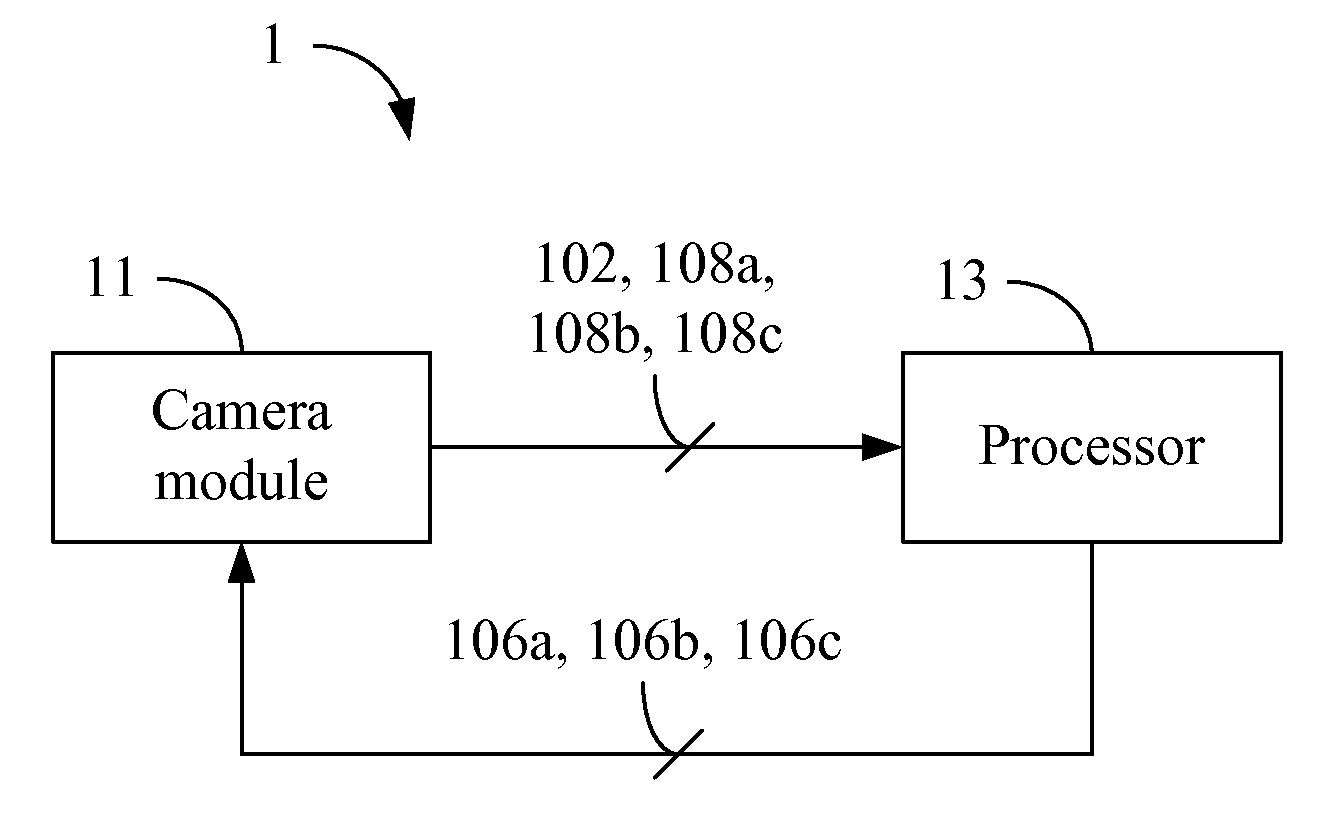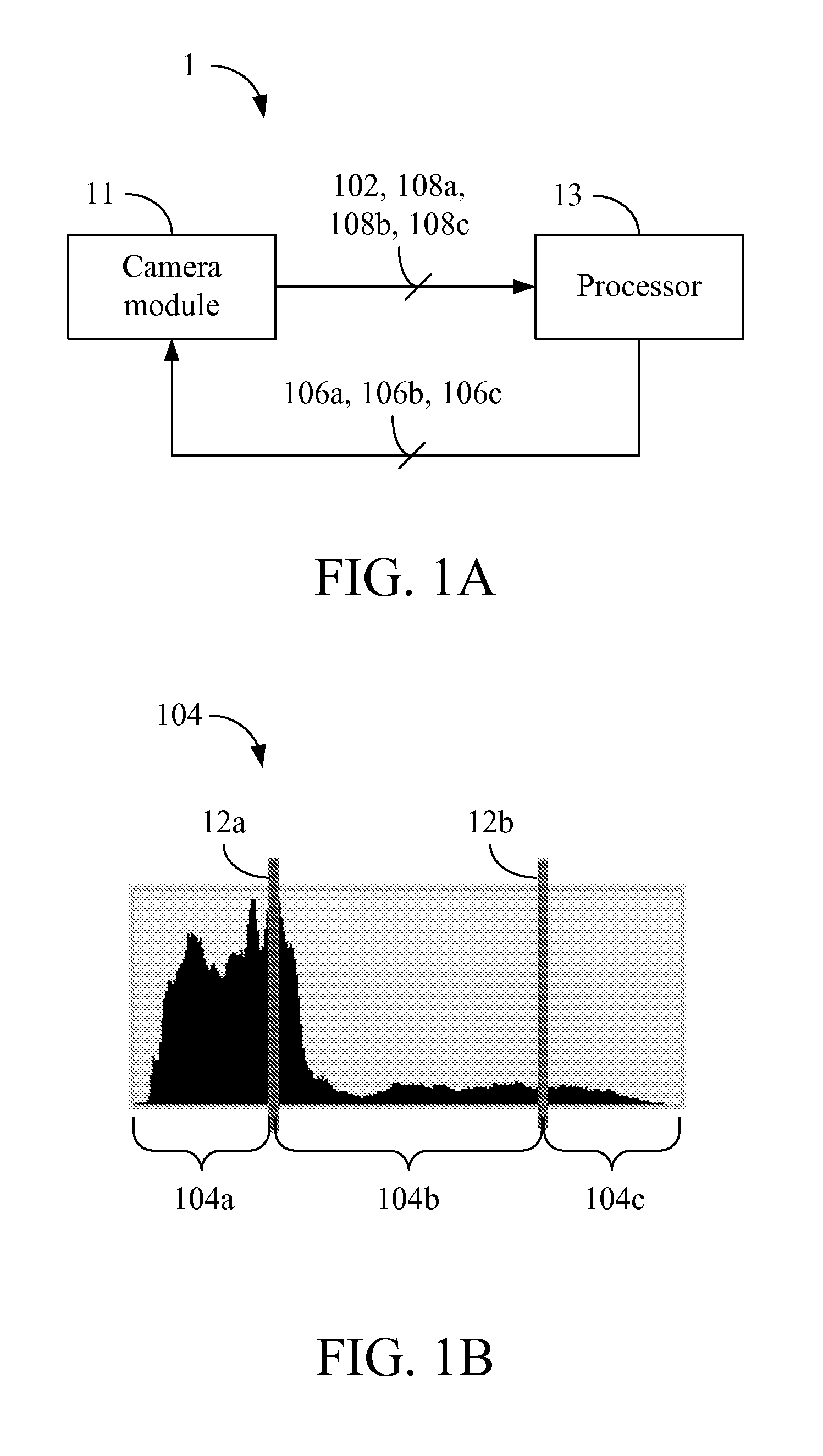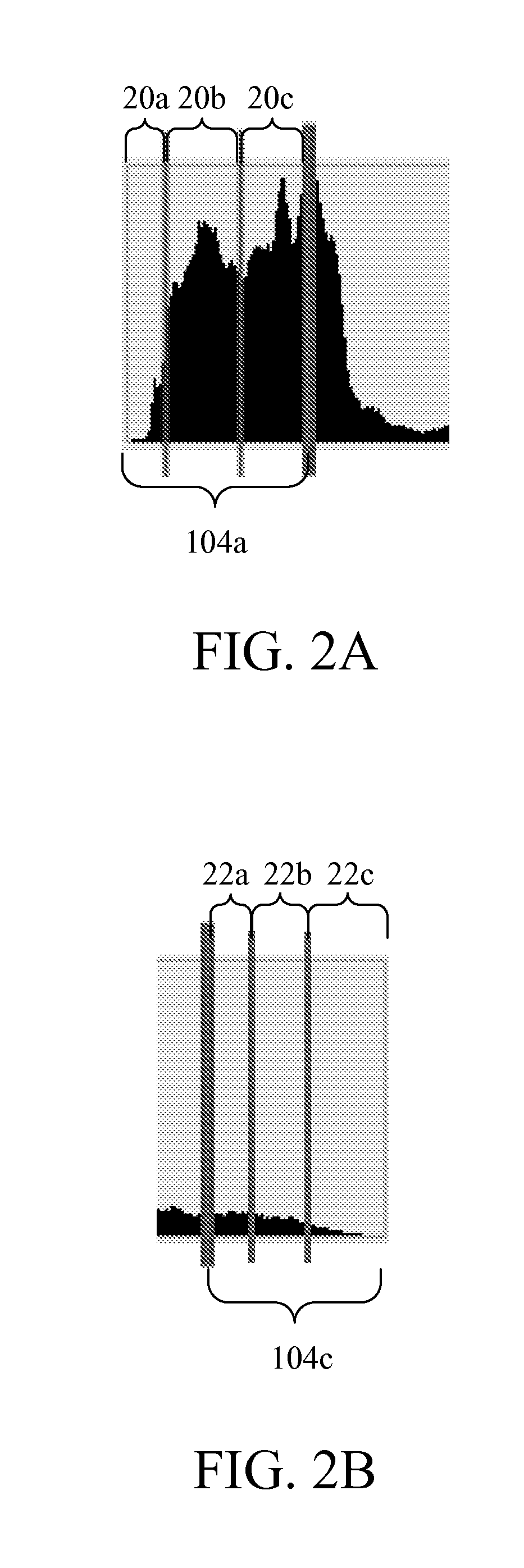Exposure Value Adjustment Apparatus, Method, and Non-Transitory Tangible Machine-Readable Medium Thereof
a value adjustment and exposure value technology, applied in the field of exposure value adjustment apparatus, method, and non-transitory computer readable medium, can solve the problems of inability to recover enough highlights and/or overexposure values, and conventional hdr techniques have no knowledge of how much under-exposure value to recover enough highlights and/or over-exposure values, etc., to achieve high dynamic range (hdr)
- Summary
- Abstract
- Description
- Claims
- Application Information
AI Technical Summary
Benefits of technology
Problems solved by technology
Method used
Image
Examples
first embodiment
[0025]the present invention is an exposure value adjustment apparatus 1 and a schematic view of which is depicted in FIG. 1A. The exposure value adjustment apparatus 1 comprises a camera module 11 and a processor 13, wherein the camera module 11 and the processor 13 electrically connected to each other. The processor 13 may be any of various processors, central processing units (CPUs), microprocessors, or other computing devices that are well-known by those of ordinary skill in the art.
[0026]In this embodiment, the camera module 11 captures a reference image 102 by a base exposure value. The reference image 102 may be a preview image and the base exposure value may be 0 EV. The processor 13 then generates a histogram 104 of the reference image 102 as shown in FIG. 1B. Next, the processor 13 divides the histogram 104 into a low partial histogram 104a, a middle partial histogram 104b, and a high partial histogram 104c by a first threshold 12a and a second threshold 12b. It is noted th...
second embodiment
[0036]From the above descriptions, it is learned that the second embodiment determines whether the reference image 102 was taken under-exposed and / or over-exposed more specifically. In addition, the low partial histogram 104a is divided into portions 20a, 20b, 20c that correspond to various exposure values greater than the base exposure value, so the high exposure value 106c can be determined more accurately by considering the luminance distribution of the pixel in the low partial histogram 104a. Likewise, the high partial histogram 104c is divided into portions 22a, 22b, 22c that correspond to various exposure values smaller than the base exposure value, so the low exposure value 106a can be determined more accurately by considering the luminance distribution of the pixel in the high partial histogram 104c. As the low exposure value 106a, the middle exposure value 106b, and the high exposure value 106c are decided more accurately, the resultant HDR image contains more details.
[0037...
third embodiment
[0038]In the third embodiment, the low exposure value 106a and the high exposure value 106c will be further fine-tuned before being used for deciding the middle exposure value 106b. Specifically, the processor 13 further determines whether the high exposure value 106c is greater than a predetermined exposure value. In other words, the processor 13 determines whether the backlight is strong and / or whether the main object in the reference image 102 is dark. If the high exposure value 106c is greater than the predetermined exposure value, it means that the backlight is strong and / or the main object in the reference image 102. Thus, the processor 13 increases the high exposure value 106c by a predetermined value, such as increasing the high exposure value 106c by +0.5 EV.
[0039]In addition, the processor 13 determines whether an average luminance value of the reference image 102 is smaller than a predetermined luminance value. That is, the processor 13 determines whether the environment ...
PUM
 Login to View More
Login to View More Abstract
Description
Claims
Application Information
 Login to View More
Login to View More - R&D
- Intellectual Property
- Life Sciences
- Materials
- Tech Scout
- Unparalleled Data Quality
- Higher Quality Content
- 60% Fewer Hallucinations
Browse by: Latest US Patents, China's latest patents, Technical Efficacy Thesaurus, Application Domain, Technology Topic, Popular Technical Reports.
© 2025 PatSnap. All rights reserved.Legal|Privacy policy|Modern Slavery Act Transparency Statement|Sitemap|About US| Contact US: help@patsnap.com



